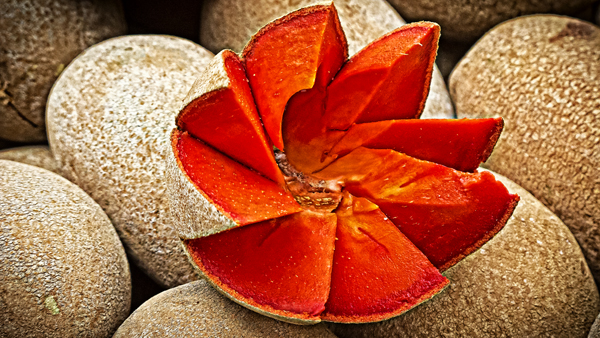This fruit blog examines the mamey (pronounced mah-may) fruit, offspring of the mamey zapote tree. The tree is a large, ornamental evergreen that matures at 60 to 140 feet, and produces the fruit shown here. These fruits are a dull brown on the outside, utterly nondescript in appearance, growing from 4 to 10 inches (10-25 centimeters) in length and 3-5 inches (8-12 centimeters) in width. However, the fuzzy, rough brown exterior hides a jewel within, for the edible fruit is a beautiful, rich orange in color. You can tell its ripe if the skin is slightly soft to the touch. But that isn’t usually necessary, as these fruits are often displayed cut open in an ornamental zig zag pattern reminiscent of a tulip flower. Also, sellers will often nick the fruit near the stem so that potential buyers can see that the interior is not green but appropriately pink and thus ripe.
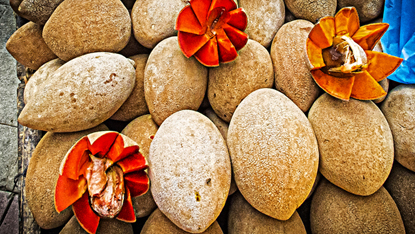
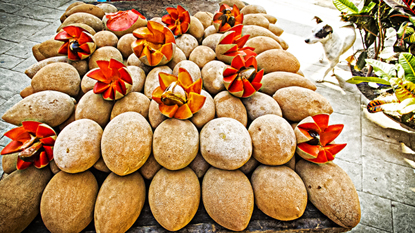
When mamey is in season, men will appear with cartloads of them set up on the street corner here in Sayulita, with a few cut open in that unmistakable zig zag pattern to show off their color and ripeness. Mamey time.
You can eat this fruit fresh and raw, in fruit salad, or you can turn it into ice cream, milkshakes, smoothies, or fruit bars. Many Mexican cooks use it in cake and muffin batter, and it is said to make a fine mousse as well. You can also make mamey marmalade. Rumor has it there are aphrodisiac qualities, although we couldn’t find any evidence to back this up.
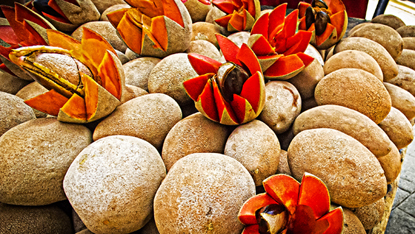
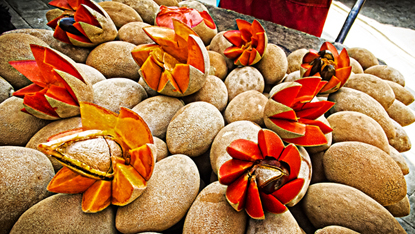
What about flavor? As always, when tasting new fruits, one ends up falling back on comparisons—in this case, to pumpkin, peach, cherry, even sweet potato. All hinted at, but really, like most fruit, the mamey has its own distinct taste.
In the middle lies a large, shiny black seed, which in turn can be peeled, revealing a yellow kernel. This kernel can be split, and in doing so, an odor faintly reminiscent of almonds is released.
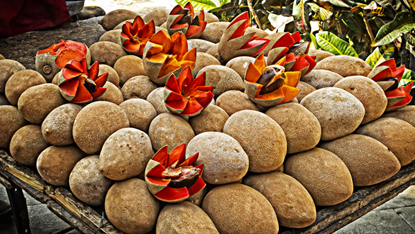
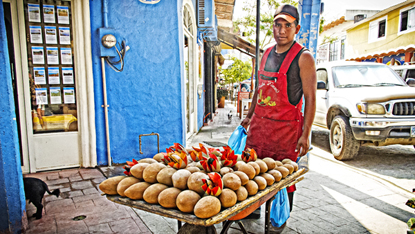
I’ve noticed this odor around many fruit pits, and as it turns out, the source of that distinct, almond aroma is cyanide, the notoriously toxic poison. Sounds scary, but the minute quantities present in mamey pits can easily be neutralized by boiling the pits. In parts of Mexico, these pits are called pixtlis, and after being boiled with herbs and smoked, they are used to flavor mole. These pits have been used for flavoring since Aztec times, when it was used in chocolate drinks, and today, in Oaxaca, you’ll find it in tejate, the cacao drink served at markets and fairs.
On the healthy side, mamey is a good source of vitamins C, A, and B6 as well as iron, riboflavin, magnesium, and copper. Mameys do grow in Florida, but coming from the northwest, I had never seen or tasted this fruit until I spent some time in Mexico.
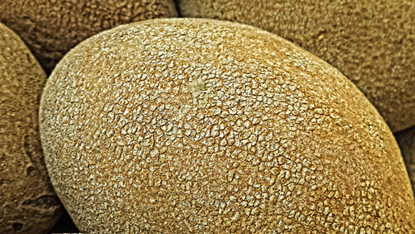
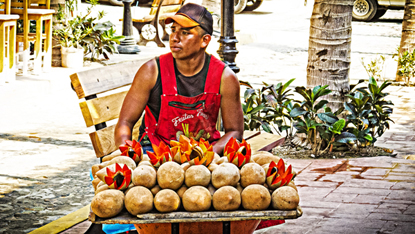
A minor note of caution: you should not cook with the mamey pits sold in bags at herb or medicinal stalls in Mexican markets. Those pits are meant to be grated and added to shampoo, for it is said that mamey pits will also make thinning hair grow thicker and more curly. The pits meant for kitchen use are sliced, strung together, and sold in necklace form.


